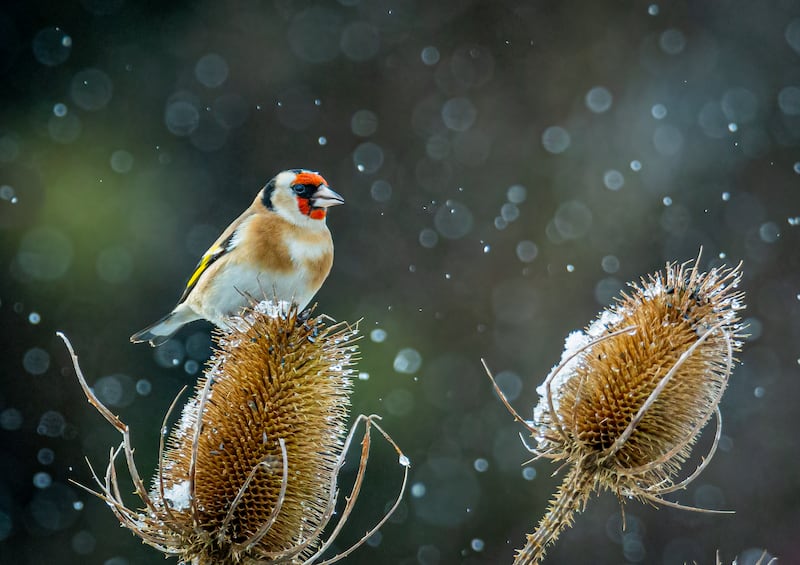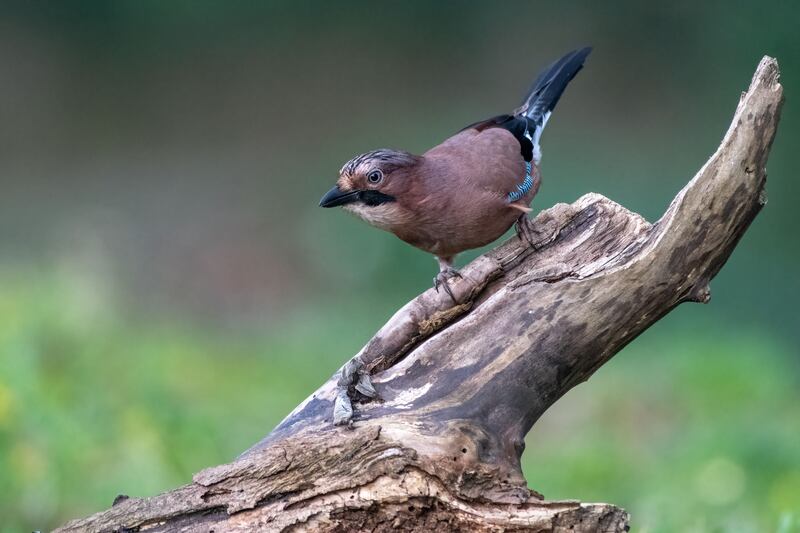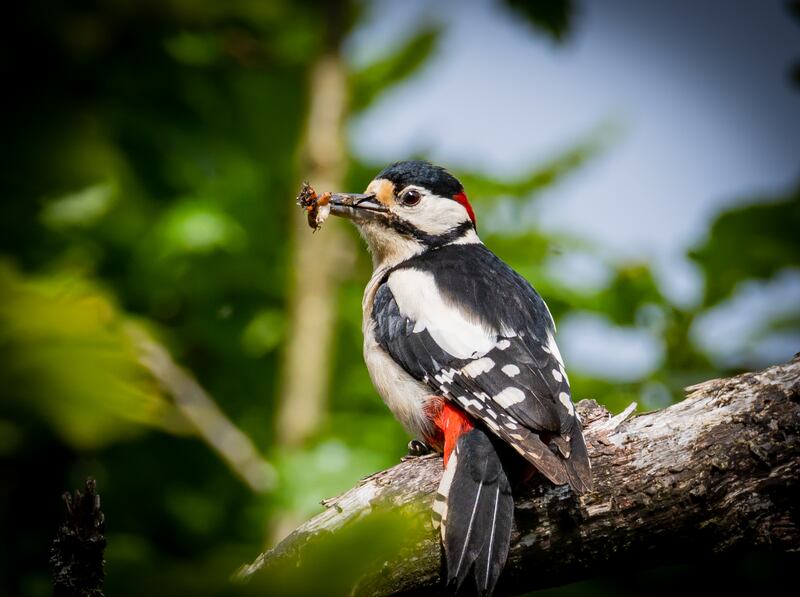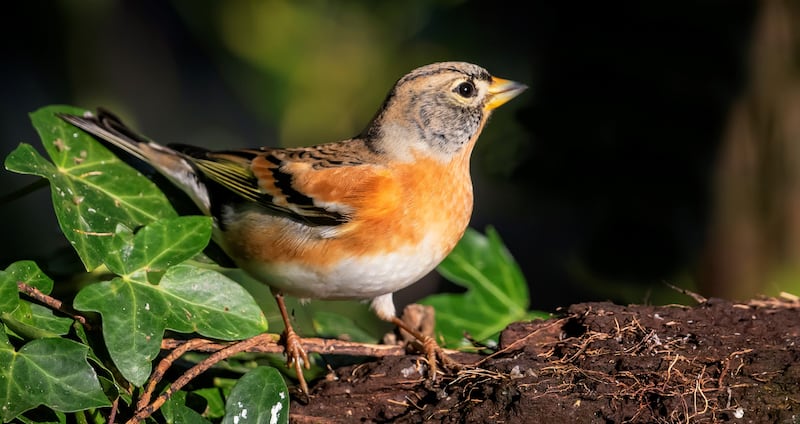Many people turned to bird-watching during Covid-19 and Birdwatch Ireland had their highest ever number of recorders for their annual Irish Garden Bird Survey in that first winter of the pandemic.
About 2,600 householders recorded different bird species in their gardens, green spaces under their balconies and outside the windows of their workplaces in the winter of 2020/2021.
The survey, which is the largest and longest-running wildlife survey in Ireland, attracted about 2,000 householders, schools and community groups last winter and Brian Burke, co-ordinator of the Irish Garden Bird Survey, is confident numbers will be high again this year.
But this exercise of recording the highest number of different bird species seen at any one point each week is not only a hobby for nature lovers, it also provides Birdwatch Ireland with important information on the rise and fall of different bird species in Ireland.
RM Block
“It’s about monitoring the environmental health and the state of our countryside. All birds are indicator species and studying the common birds tells you as much as the changes in rarer species,” says Burke.

Some of the recent changes noted in the surveys include an increase in the number of goldfinches seen in Irish gardens. The goldfinches resident in Ireland were augmented by thousands arriving from Scotland.
Linnets are another bird that people have seen more often in recent years – partly because of the decline in the larger greenfinches which would have previously pushed off these smaller birds from feeders.
The demise of greenfinches is due to the presence of the trichomonas parasite which kills them by lodging in their throat and preventing them from swallowing food.
“Greenfinches were one of the most common birds seen in 85/90 per cent of gardens but how they are seen in less than 50 per cent of gardens because of this parasite,” says Burke.
Chaffinches also pick up this infection and Burke says the best way to reduce the spread of this parasite is to clean your bird feeders regularly.
“If you’re putting out bird feeders, you have a responsibility to clean them thoroughly at least once a week in a bucket of warm soapy water with a bit of bleach in it,” he explains.
While 2022 has seen a heightened risk of avian flu in wild birds and poultry, Birdwatch Ireland is adamant that the risk of avian flu in garden birds is very low at present and it is safe to continue to feed your garden birds.
Remember though that peanuts and seeds (sunflower seeds are good) are the preferred food as only larger birds like crows and herring gulls will feed on breadcrumbs and leftover meat scraps. Also, poultry fat is not suitable for birds as when it dissolves it damages their feathers, causing the birds to die.
The rise and fall of different bird species can also be related to weather conditions in Ireland and other parts of the world.

So, for example, the cold spring of 2021 resulted in lower numbers of song thrushes last winter as many chicks did not survive. However, the previous year, which saw an abundance of acorns from oak trees, meant that the colourful corvidae Jays did not bother coming into gardens for food. They were back again the following year though signaling how the search for food – especially during very cold weather – is always the key reason for birds to come into people’s gardens.

Great spotted woodpeckers are a relative newcomer to Irish gardens, having first come here from the UK in 2005.
“There are now nesting in every county in Ireland. They arrived here naturally and they aren’t threatening any other species. In fact, by boring holes in trees, they are creating habitats for bats and other nesting birds like blue tits,” explains Burke.
The small yellow and black siskins are another popular bird to watch out for as they often hang upside down on feeders as they are used to hanging on the tips of branches. And some householders in north and west Dublin recorded ring-necked parakeets over the last three years.
These birds, which have escaped from cages, can survive in the Irish climate but the National Parks and Wildlife Service has caught the majority of them to prevent their spread in Irish cities, as has happened in London and other European cities.

Burke says that birdwatchers were also excited to see bramblings last winter. These birds migrate here from northern Scandinavia.
“They only come every four or five years and will join in flocks of chaffinches. I saw eight bramblings in my Wicklow garden last winter and I know they were different birds because I was able to ring seven of them,” says Burke, who has a degree in zoology and masters in Wildlife Conservation from University College Dublin.
Early in the day – once the sun is up – is the best time to observe birds in your garden. After these long winter nights, this is the peak in activity as hungry birds come in search of food. Keep your feeder topped up and you’ll see more birds.
Blackbirds, robins, blue tits, rooks, jackdaws and magpies will be spotted in almost every garden but starlings and goldfinches will be seen in the greatest numbers.
Birdwatch Ireland regularly hears from members of the public sometimes concerned about not seeing certain birds and sometimes simply excitedly sharing what they have seen.
“A lot of people still write letters to us and it’s one of the most enjoyable parts of my job to read them all,” says Burke.
He adds, “when it’s someone’s first year taking part, they say how much enjoyment they got from it and how much they learned from watching their garden birds a bit closer. A lot of people have a favourite robin that is very tame and almost comes looking for food from them every morning”.
According to Burke, veteran recorders tend to point out trends like how the ice or snow brought species into their gardens that they’d never recorded before.
Ultimately, observing birds in your garden offers an antidote to all the disturbing news about the decline in biodiversity around the world and encourages nature lovers to push governments to prioritise nature-based solutions in the fight against climate change.
The Irish Garden Bird Survey, which is sponsored by Ballymaloe House (in memory of Myrtle Allen’s husband, Ivan who was an avid bird watcher) runs from the end of November to the end of February. However late comers can still join on birdwatchireland.ie
















